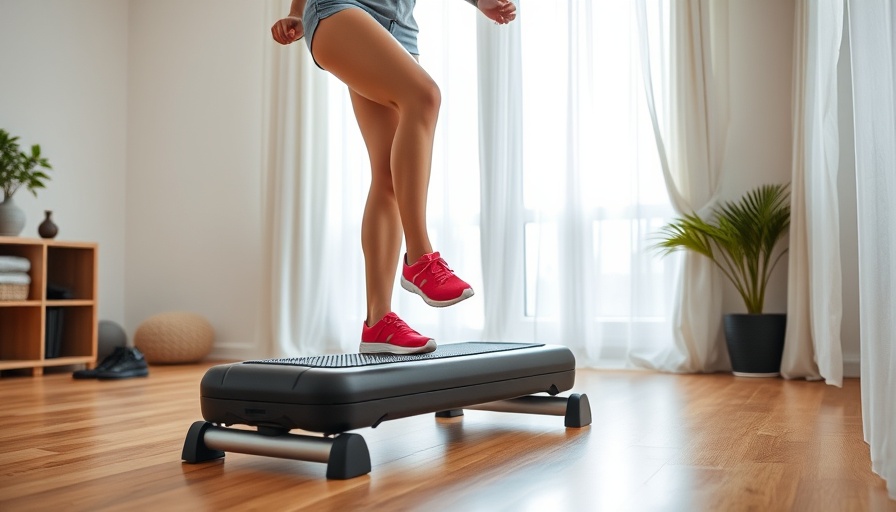
Unlocking the Power of Lower Body Strength Training
Strength training is often categorized by the type of movements being performed, and lower body workouts are essential for overall fitness. They not only build muscle mass but also enhance balance and stability, which are crucial for daily activities. In today’s fast-paced world, even simple movements can provide immense benefits, and if you're part of the SDA faith community looking to improve physical well-being, integrating lower body strength training into your routine can be life-changing.
In 'Lower Body Strength Circuits with Bodyweight Cardio Finisher: Efficient Circuits with Dumbbells', the discussion dives into effective workout routines, exploring key insights that sparked deeper analysis on our end.
Why Bodyweight and Dumbbell Workouts Matter
In the workout shared by Tasha from Fitness Blender, the combination of bodyweight movements with dumbbells allows individuals of varying fitness levels to engage effectively. Bodyweight exercises, like squats and lunges, draw from natural movements while strengthening numerous muscle groups. Coupled with dumbbell workouts, such as deadlifts and lunges, they accentuate strength gains and functional fitness.
Historical Context: Rise of Functional Fitness
The emergence of functional fitness can be traced back to the fitness revolution in the 1980s, where workouts began prioritizing daily movements over aesthetic improvement alone. Today, as many people shift towards maintaining functionality in both their personal and professional lives, integrating exercises like those outlined in Tasha's lower body strength circuit has become increasingly popular. These workouts serve not only as a method of building strength but are also efficient for those balancing busy schedules.
Insights Into Effective Workout Routines
Tasha’s video provides an engaging and effective circuit with a clear structure—combining warm-ups, circuits, and cooldowns. This sets a perfect template for anyone looking to enhance their fitness routine. The warm-up consists of dynamic stretches that are crucial for preparing the body for intense activity, increasing range of motion, and preventing injury. Cold or unprepared muscles are more susceptible to injury during strenuous activities, making this phase non-negotiable.
Future Trends: Blending Strength Training and Cardio
The future of fitness lies in the fusion of strength training and cardiovascular workouts, making circuits such as Tasha's incredibly relevant. The dual approach not only builds strength but also elevates cardiovascular fitness, allowing participants to achieve more in a shorter amount of time. We expect more low-impact cardiovascular workouts to emerge, designed specifically for people who want a strong foundational fitness base without excessive strain.
Common Misconceptions About Strength Training
One persistent myth in the fitness community is that strength training is exclusively for those looking to bulk up. However, this couldn't be further from the truth. Resistance training is beneficial for building endurance, aiding weight management, and improving mobility, particularly for older adults and those recovering from injuries. Integrating such workouts into a balanced exercise regimen fosters resilience and supports overall health.
Actionable Tips to Elevate Your Workout
If you’re new to strength training or reintroducing it into your routine, keep these actionable tips in mind as you engage in exercises like those discussed in the video:
- Start Light: Begin with lighter weights to master the form before progressing to heavier dumbbells.
- Listen to Your Body: Pay attention to how your body responds during workouts. If a movement feels off, consider modifying it or consult a fitness professional.
- Track Your Progress: Regularly note improvements in your endurance, strength, and form to stay motivated and adjust your regimen when necessary.
Emotional and Human Interest Angle
Engaging in physical fitness can be a profound journey, often intertwined with one’s personal growth and mental well-being. As members of the SDA faith community, the commitment to stewardship can extend beyond spiritual to physical wellness. A workout like Tasha's does not just target muscles; it fosters resilience and a sense of accomplishment that can contribute to a more fulfilling life. This makes strength training a vital component of holistic well-being.
Inspiration Through Accountability and Community
The success of fitness routines often hinges on community support. Those following Tasha's workouts can embrace online platforms like [Fitness Blender](https://www.fitnessblender.com), where individuals not only share their challenges but also celebrate their victories. This connection creates accountability and encourages consistency while fostering camaraderie among participants.
Conclusion: Embrace Your Fitness Journey
In our exploration of effective lower body strength circuits, it's clear that workouts like Tasha's can cater to everyone, especially within the SDA community looking for ways to integrate physical health and faith. Remember, engaging in just a few minutes of strength training can unlock massive benefits for both body and mind. Take the first step today; join a workout group, or set a routine that embraces both essential mobility and strength.
 Add Row
Add Row  Add
Add 




Write A Comment